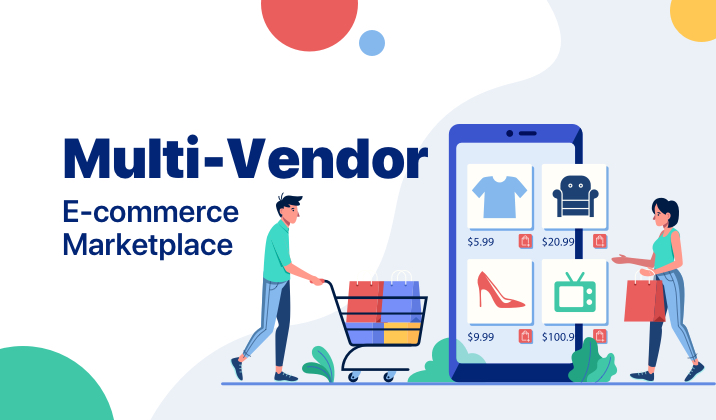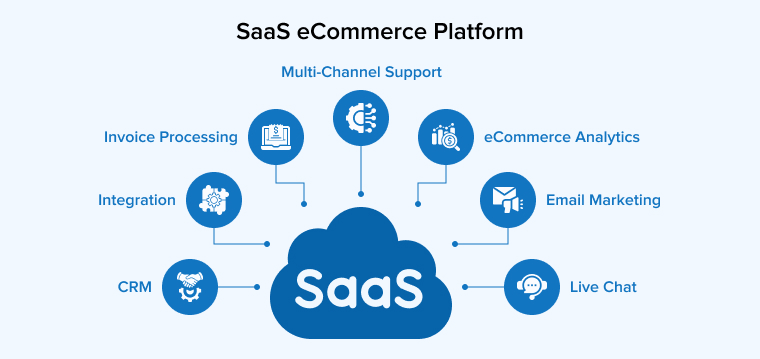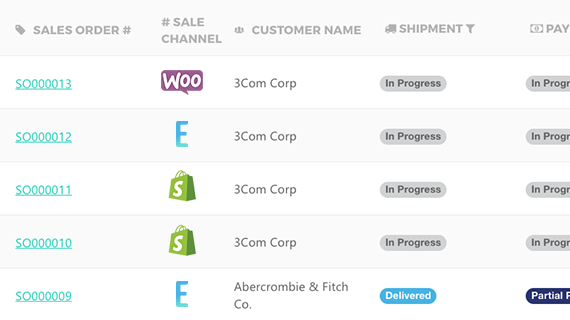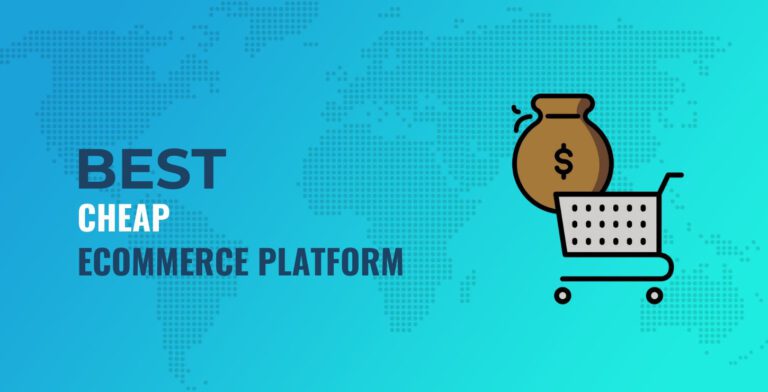Multi Vendor Ecommerce Platform: Boost Your Online Marketplace
A multi-vendor eCommerce platform allows multiple sellers to list and sell products in one online marketplace. This setup offers buyers a diverse range of products from different vendors.
A multi-vendor eCommerce platform is a popular choice for online businesses. It allows multiple vendors to sell their products on one site, increasing product variety. This type of platform benefits both sellers and buyers. Sellers gain access to a broader audience without the need for individual online stores.
Buyers enjoy a wide selection of products and competitive pricing. The platform typically handles transactions, logistics, and customer service. This model fosters a competitive environment, enhancing customer satisfaction. An efficient multi-vendor eCommerce platform can significantly boost sales and market reach.
Key Features
A multi vendor ecommerce platform offers many features to users. These features ensure a smooth and efficient experience for both vendors and customers. Below, we highlight some of the key features that make these platforms stand out.
User-friendly Interface
A user-friendly interface is essential for any ecommerce platform. It helps users navigate easily. Vendors can set up their stores without hassles. Customers can find products quickly. The interface should be intuitive and visually appealing.
Here’s what a user-friendly interface includes:
- Simple navigation menus
- Quick loading times
- Mobile responsiveness
- Easy-to-use search bar
Vendor Management
Vendor management is crucial for a multi vendor ecommerce platform. It allows platform owners to manage vendors effectively. Each vendor has their own dashboard. They can track their sales and earnings. This helps in keeping the platform organized.
Key aspects of vendor management include:
| Feature | Description |
|---|---|
| Vendor Dashboard | Each vendor gets a personalized dashboard. |
| Sales Tracking | Vendors can track their sales and earnings. |
| Order Management | Vendors can manage their orders efficiently. |
| Product Management | Vendors can add, edit, and delete products. |
Product Listings
Product listings are the core of any ecommerce platform. They allow vendors to showcase their products. Each product listing should include detailed information. This helps customers make informed decisions.
Important elements of product listings are:
- Product title
- High-quality images
- Detailed description
- Price
- Customer reviews
A well-organized product listing attracts more customers.

Credit: stylemixthemes.com
Benefits
The benefits of a multi-vendor ecommerce platform are numerous. This setup offers advantages for both vendors and customers. Let’s dive into some key benefits:
Diverse Product Range
A multi-vendor platform hosts many sellers. This results in a diverse product range. Customers can find a wide variety of products in one place. This saves them time and enhances their shopping experience.
Here’s a quick comparison:
| Single Vendor | Multi-Vendor |
|---|---|
| Limited products | Vast product range |
| Single brand | Multiple brands |
Increased Traffic
More vendors mean more customers. Each vendor brings their own audience. This leads to increased traffic on the platform. More traffic boosts visibility and potential sales.
Here are some benefits of increased traffic:
- Higher sales opportunities
- Better brand awareness
- Improved SEO rankings
Shared Marketing Efforts
Marketing can be costly. In a multi-vendor setup, these costs are shared. Vendors collaborate on marketing campaigns. This results in shared marketing efforts and reduced costs for each seller.
Shared marketing efforts provide:
- Cost-effective promotions
- Broader reach
- Unified brand message
These benefits make the multi-vendor ecommerce platform a win-win for all.
Choosing The Right Platform
Choosing the right Multi Vendor Ecommerce Platform is crucial for success. The right platform can boost sales and improve user experience. Below are key factors to consider:
Scalability
Your platform should handle increased traffic and sales. As your business grows, so should your platform. Look for features like:
- Flexible server options
- Load balancing
- Automatic updates
These features ensure your site runs smoothly under pressure. Always check if the platform can scale up seamlessly.
Customization Options
Customization allows you to stand out. A good platform offers:
- Customizable templates
- API integrations
- Plugin support
These options help tailor your site to your brand. The more customization, the better the user experience.
Security Measures
Security is vital for any ecommerce platform. Look for features like:
- SSL certificates
- Two-factor authentication
- Regular security updates
These features protect your data and your customers’ information. Always prioritize security to build trust with your users.

Credit: www.webfox.dev
Implementation Steps
Implementing a Multi Vendor Ecommerce Platform involves several critical steps. These steps ensure a smooth setup and integration. Here’s a detailed guide on the necessary Implementation Steps.
Planning And Research
Start with thorough planning and research. Identify the platform’s purpose and goals. Understand your target audience.
Consider the following:
- Market analysis
- Competitor research
- Feature requirements
- Budget estimation
Create a detailed project plan. Include timelines and milestones.
Platform Setup
Choose the right ecommerce platform. Options include Shopify, Magento, and WooCommerce.
Follow these steps:
- Register a domain name.
- Select a hosting provider.
- Install the ecommerce software.
- Configure the platform settings.
Make sure to set up payment gateways. Ensure security measures are in place.
Vendor Onboarding
Onboard vendors to your platform. Provide clear instructions and support.
Steps to onboard vendors:
- Create vendor registration forms.
- Approve vendor applications.
- Provide training materials.
- Assist vendors with product listings.
Ensure vendors understand your platform’s policies. Offer continuous support and feedback.
Marketing Strategies
Marketing strategies are essential for any multi-vendor ecommerce platform. They help attract more visitors and increase sales. This section will cover effective strategies to boost your platform’s visibility and growth.
Seo Techniques
Search Engine Optimization (SEO) is vital for your platform’s success. Here are some essential techniques:
- Use relevant keywords in your product descriptions and titles.
- Create high-quality backlinks to your site.
- Optimize your meta tags and alt text for images.
- Ensure your website is mobile-friendly.
- Improve your website’s loading speed.
Social Media Campaigns
Social media platforms are powerful tools for marketing. Here are some tips for effective campaigns:
- Identify your target audience on each platform.
- Create engaging content that resonates with your audience.
- Use hashtags to increase your content’s reach.
- Collaborate with influencers in your niche.
- Run paid ads to boost visibility.
Email Marketing
Email marketing can drive sales and retain customers. Follow these steps for successful email campaigns:
- Build a quality email list with opt-in forms.
- Segment your list based on customer behavior.
- Create personalized and engaging content.
- Use clear call-to-actions in your emails.
- Track and analyze your email performance.
Marketing strategies are the backbone of a thriving multi-vendor ecommerce platform. Implement these techniques to see a significant boost in your platform’s performance.
Managing Vendors
Managing vendors on a multi-vendor ecommerce platform is crucial. Effective vendor management ensures smooth operations and customer satisfaction. This section covers Vendor Support, Performance Tracking, and Conflict Resolution.
Vendor Support
Providing excellent vendor support is key. Vendors need easy access to help and resources. This support includes:
- 24/7 customer service
- Comprehensive FAQs
- Training materials and tutorials
Supporting vendors helps them succeed. Happy vendors lead to a thriving platform.
Performance Tracking
Tracking vendor performance is essential. Performance tracking helps identify top-performing vendors and those needing improvement.
| Metric | Description |
|---|---|
| Sales Volume | Measures total sales made by the vendor. |
| Customer Reviews | Tracks customer feedback and ratings. |
| Order Fulfillment | Monitors timely and accurate order delivery. |
Regular performance tracking ensures quality and reliability. It also highlights areas for improvement.
Conflict Resolution
Conflicts between vendors and customers are inevitable. Quick and fair conflict resolution is vital.
- Listen to both parties
- Gather necessary evidence
- Propose a fair solution
Effective conflict resolution builds trust. It ensures long-term relationships with vendors and customers.
Future Trends
The world of multi-vendor ecommerce platforms is evolving rapidly. Businesses need to stay ahead by understanding future trends. This section explores these trends.
Ai And Automation
Artificial Intelligence (AI) and automation are transforming ecommerce. They streamline operations and improve customer experiences.
AI can predict customer behavior. It helps vendors recommend the right products. Automation handles repetitive tasks. This allows sellers to focus on growth.
- Chatbots for customer service
- Automated inventory management
- Personalized product recommendations
Businesses can reduce costs and enhance efficiency with AI and automation.
Mobile Commerce
Mobile commerce is gaining popularity. More people shop using their smartphones. Multi-vendor platforms must optimize for mobile users.
Responsive design is crucial. It ensures a seamless shopping experience. Mobile apps provide added convenience. They offer push notifications and faster load times.
| Feature | Benefit |
|---|---|
| Responsive Design | Enhanced user experience |
| Mobile Apps | Increased engagement |
Businesses should invest in mobile-friendly solutions. This captures the growing mobile user base.
Sustainability
Sustainability is becoming a key focus. Consumers prefer eco-friendly products and practices.
Multi-vendor platforms can promote sustainable products. They can highlight green vendors. Implementing eco-friendly packaging and shipping options is crucial.
- Highlight eco-friendly vendors
- Offer sustainable packaging
- Promote green practices
Embracing sustainability can attract more conscious consumers. It helps build a positive brand image.
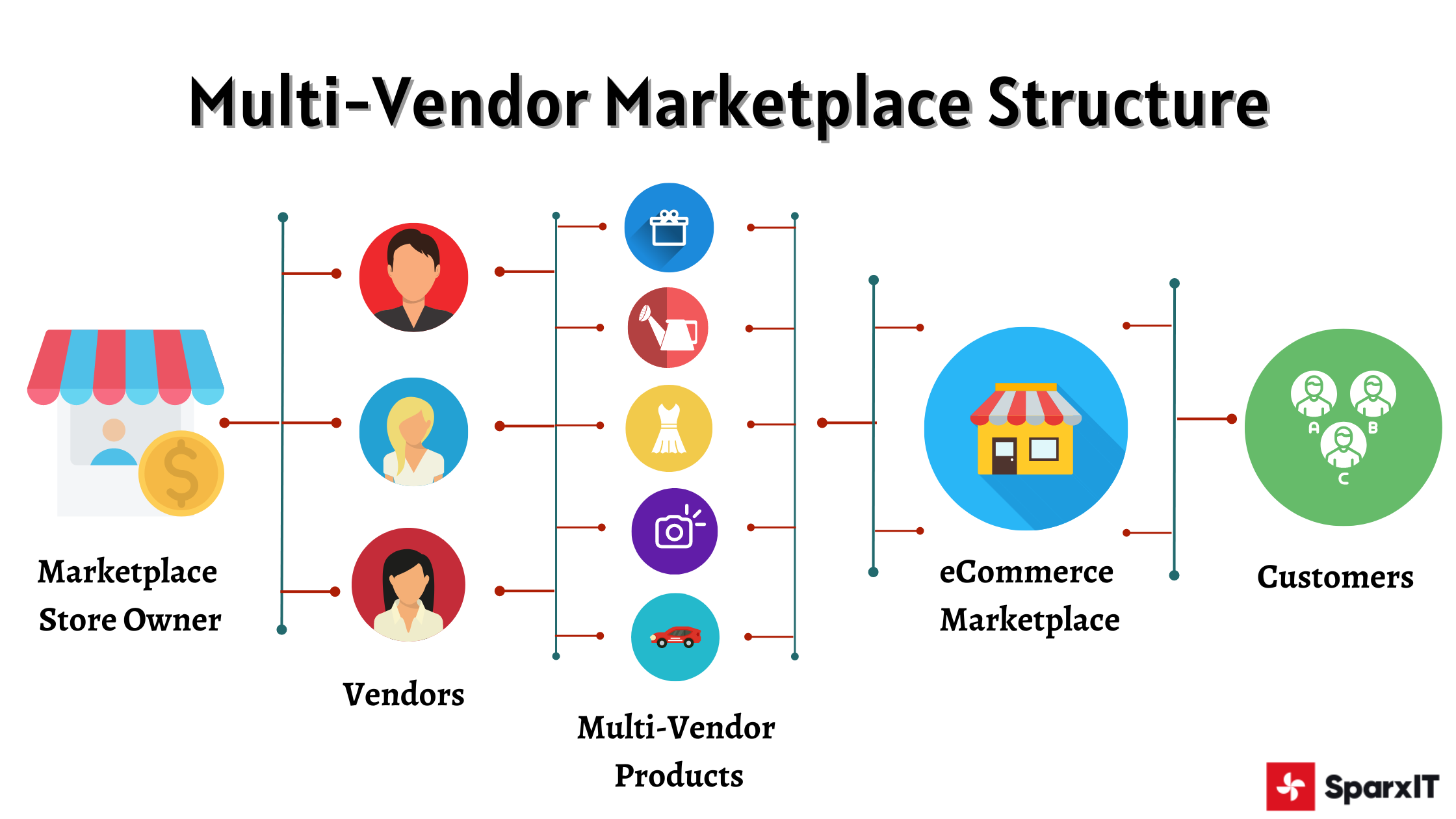
Credit: www.sparxitsolutions.com
Frequently Asked Questions
What Is A Multi-vendor Ecommerce Platform?
A multi-vendor ecommerce platform allows multiple sellers to list their products on a single website. It enables a diverse product range and competitive pricing.
How Does A Multi-vendor Platform Work?
A multi-vendor platform works by allowing vendors to create accounts and manage their own products. The platform handles payments and shipping logistics.
What Are The Benefits For Sellers?
Sellers benefit from increased exposure, access to a larger customer base, and shared marketing efforts. They can focus on product quality and customer service.
How To Choose The Best Multi-vendor Platform?
To choose the best platform, consider features, scalability, and ease of use. Look for strong customer support and robust security measures.
Conclusion
A multi-vendor eCommerce platform offers numerous benefits. It enhances customer choices and boosts sales. Businesses can expand their reach and grow faster. With the right strategy, this platform can transform your online presence. Start today and witness the remarkable growth in your eCommerce venture.
